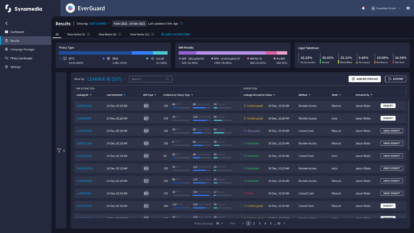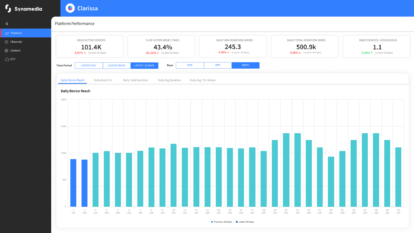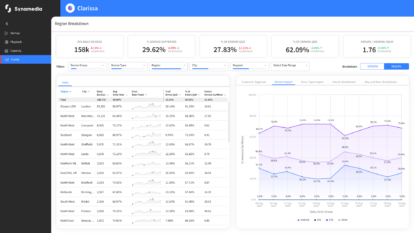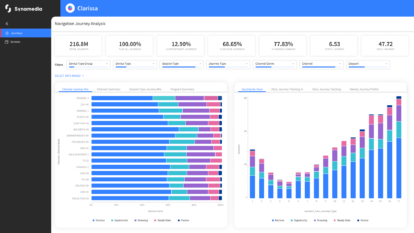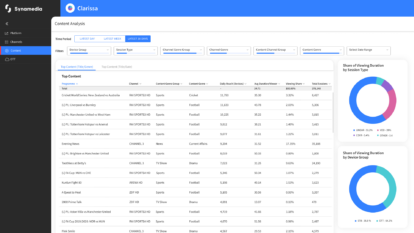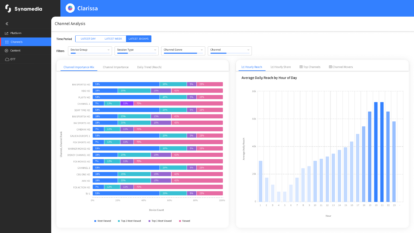Why ATSC 3.0 upgrades more than picture quality
The switch to “NextGen TV”, which will carry the new ATSC 3.0 standard for over-the-air (OTA) 4K broadcasting, is going to be a big deal. For audiences and for broadcasters.
There’s been widespread coverage of the picture quality boost that NextGen TV promises viewers, (and some around how content will be delivered) but not a great deal on what else is going to change for broadcasters. And that’s odd—because the answer is: a lot.
The truth is, NextGen TV (the Consumer Technology Association’s brand name for ATSC 3.0) is the biggest upgrade to broadcast TV since the transition to digital broadcasting (DTV) in 2009—and it’s going to bring to present broadcasters with a wealth of new challenges and opportunities beyond of picture quality.
And like the switch to DTV before it, the broadcasters that leverage the full potential of NextGen TV fastest will enjoy significant first-movers advantage, setting the new standards everyone else needs to meet.
We’re going to take a broader view of NextGen TV, to look at how the standard will impact other aspects of the video experience beyond picture quality, in three key areas:
- One-to-one targeting
- Great mobile experiences
- Advanced security
Let’s dive in.
1. TV gets one-to-one consumer relationships
Consumer expectations have come a long way since the days of DTV.
Today, people have grown used to personalized experiences from the digital services they use—discovering, exploring and consuming content at-will, based on an active feedback loop of continuously improving recommendations.
But for years traditional broadcast has been held back by the limitations of ATSC 1.0, which doesn’t support the return channel connectivity required to track audience behavior.
The result is that broadcasters have had limited ways to analyze engagement and personalize individual experiences—making it almost impossible to build meaningful one-to-one consumer relationships.
That’s all about to change with NextGen TV.
The long-awaiting merge of OTA broadcast and broadband will enable broadcasters to track what (and how) viewers are watching and to optimize their services, programming and recommendations accordingly.
Suddenly broadcasters will be able to enhance content discovery in-line with the standards set by digital-native services—making closely-targeted recommendations and helping users find experiences they love (that they might never have stumbled across organically).
They’ll also be able to use digital watermarks to identify programs and measure their impact with specific audiences, making their continuous improvement cycles a lot more like the development cycles in pure OTT businesses.
The possibility for closer relationships will also extend to brands, as ATSC 3.0 will support addressable advertising, meaning marketers can reach tighter, more accurate audience segments than ever, over the air and across all screens.
Speaking of which…
2. Broadcast TV arrives on mobile devices
NextGen TV isn’t just going to bring a 4K broadcast signal to the TV in your living room.
It’s going to bring it to the laptop on your coffee table, the tablet on your nightstand, and the phone in your pocket too (and with the uptake of smart devices, maybe even your watch, your fridge, car seat headrests and so on.)
This is going to fundamentally reshape the modern TV experience in a few interesting ways.
For one, consumers won’t be tied to one static screen to watch premium programming. Being able to consume content like live sports and events from anywhere, on anything (using a signal with better coverage and penetration than many cell carriers support today) could take the promise of Infinite Entertainment truly global.
On the other side, NextGen TV frees broadcasters to not only match, but eventually leapfrog past the quality standards normalized by OTT providers, as NextGen IP broadband services may eventually support 8K resolutions.
NextGen TV will also enable the delivery of IP broadband content that’s fully synchronized with TV broadcasts to any compatible handheld device.
But there’s more to this than the ability to watch content anywhere, anytime. NextGen TV will also support viewers to interact with content. That’s because ATSC 3.0 enables the delivery of IP broadband content to handheld devices that is fully synchronized with the broadcast television signal.
So viewers could watch live programming and access social media or interactive applications on the same device, through a single high-quality broadband service.
This opportunity is particularly exciting for live programming, especially sports, where audiences are witnessing the rise of super-engaging experiences in direct-to-consumer streaming apps.
Broadcasters won’t just impress viewers with HDR video and immersive audio (hello Dolby Atmos, and goodbye wild variations in volume between commercials and shows). They’ll also enable people to choose between camera angles and access stats content and highlights.
3. Content security becomes paramount
Broadcast content has always been free-to-air.
But as original content becomes a key differentiator for content providers competing for viewers, it’s going to become increasingly important for broadcasters to secure their unique local (or localized) content—not just to protect it, but to monetize it.
For instance, with NextGen TV security, broadcasters will have the opportunity to create pay-per-view events. They can also create tiers of service where they might charge for higher resolution content (e.g. 4K) while the HD signal stays available for free.
Of course, traditional security threats are still relevant too. The advent of Smart TVs have created new avenues for content and signal piracy—and we should expect piracy attempts and credentials sharing with NextGen TV, which incorporates the Internet as a back-channel.
To thwart security attacks on broadcast transmissions, ATSC 3.0 will protect content through encryption and Digital Rights Management (DRM).
But broadcasters and content owners will need to take more steps to detect and disrupt NextGen TV threats. With the new standard, they can implement audio and video watermarking (digital copyright protection) technology. This will enable broadcasters to identify which channels are often the source of pirated content, for example.
In the early days of this next generation of TV, considering today’s viewers are using more streaming platforms and “cutting the cord,” protecting your content is protecting your revenue – which is, of course, vital to survival.
The future of TV goes beyond video quality
A lot has been said about what NextGen TV will mean for audiences: higher-quality picture and immersive audio, stronger signals transmitted over greater distances to guarantee incredible reception anywhere – including on mobile devices.
But when the rollout happens, over-the-air TV will see a major upgrade everywhere, and all the glossy features for consumers shouldn’t distract broadcasters from taking a wider view to exploit the benefits that NextGen TV will bring to their business.
Out the gate, broadcasters and content providers will need to bring a well-rounded offering that marries the three areas we focused on in this piece with compelling, great-looking content.
These three areas aren’t exhaustive, but they’re indicative of the wider approach broadcasters need to keep in mind.
NextGen TV is a huge step change—it’s a massive chance to grow your audience share by innovating the next generation of customer experiences.
Don’t squander it by getting myopic about video quality.
Learn More
Download “Next Generation TV for Programmers and TV Networks” for a deeper dive into our solution.
About the Author
Mark Myslinski is Broadcast Solutions Manager, responsible for Synamedia’s Video Network streaming and broadcast solutions for web/OTT providers and station broadcasters (ATSC 3.0). Mark’s expertise spans video processing for live, file and recording applications for direct-to-consumer, and he has 15+ years of industry expertise in directing product development initiatives and managing roadmaps for ATSC, IPTV and OTT solutions.
Prior to joining Synamedia, Mark held product and deployment management positions at Intelsat, Motorola Broadband and Encompass Digital Media, as well as systems engineer positions at TelVue Corporation and Cox Communications.
Mark holds a B.S. in Electrical Engineering from Penn State University, and completed masters classes in Digital Communications at Rutgers University.

